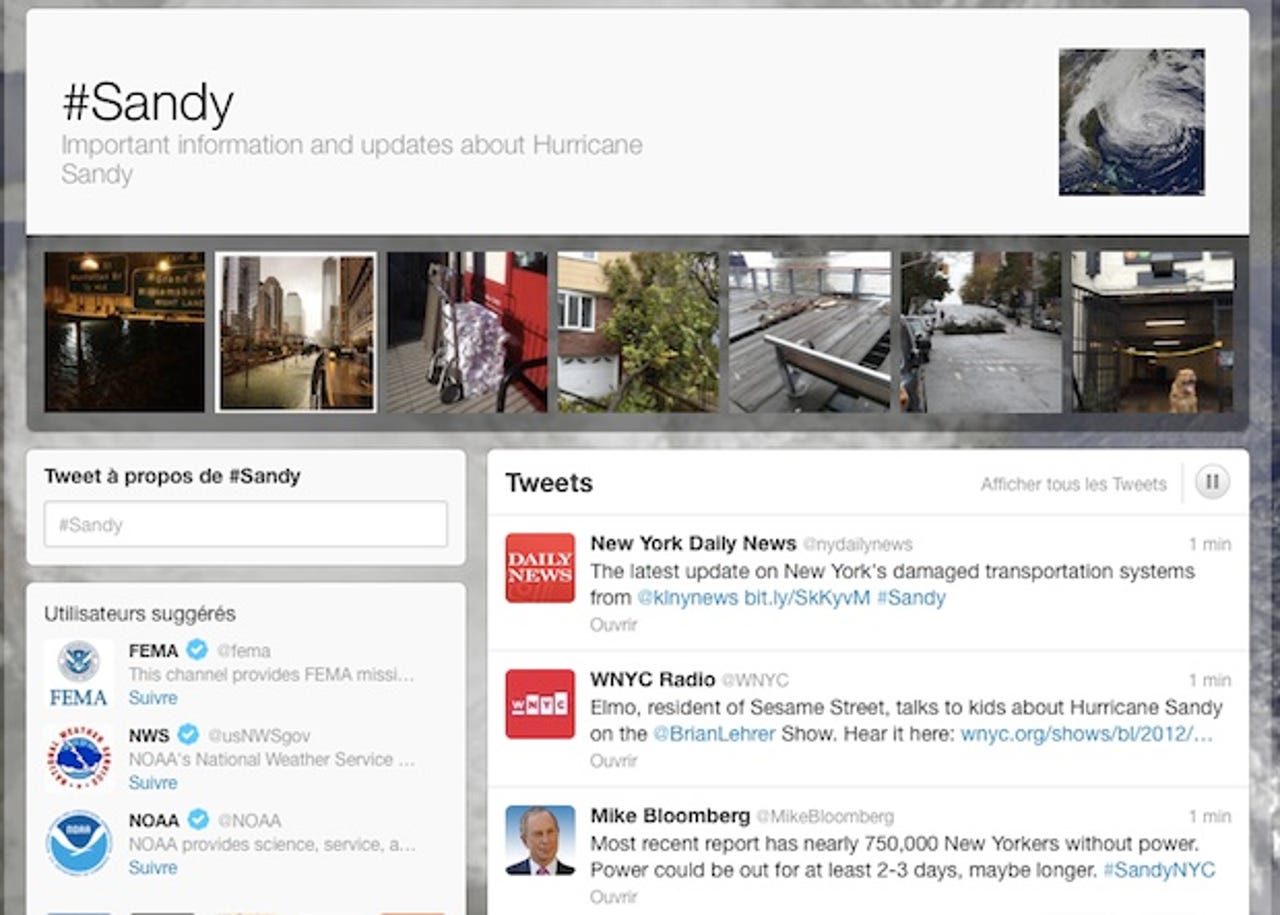Hurricane Sandy: By the numbers on Twitter and Facebook


While the Eastern Seaboard is still in the extremely early midst of the aftermath of Hurricane Sandy, it's arguable that this has been the most covered natural disaster on social media channels yet.
Even as the superstorm approached New York City on Monday, there was already talk that Sandy would prove to be a defining "citizen journalism" moment -- at least in the case of Instagram.
See also:
Why it's not a good idea to put your servers in a flood zone
Disaster hosting solution tips for hurricanes and more
That argument is on the money as users were said to be uploading photos to the mobile app at a rate of 10 snapshots per second with related hashtags (i.e. #hurricanesandy, #sandy and #frankenstorm) in the last two days.
But really, anyone using Twitter or Facebook from probably anywhere on the globe has likely already seen just how much these social networks are being used to communicate emergency updates, get help, and more.
One of the bigger trends that has played out over the last 48 hours is how rapidly Twitter, in particular, is being used to spread and then immediately debunk rumors and fake photographs, such as this now infamously Photoshopped shot of the Statue of Liberty.
Twitter itself has gone so far as to set up a dedicated hub with curated resources (i.e. tweets from the American Red Cross, FEMA, etc.) just for up-to-date news on Sandy. Twitter has also published more online resources detailed state-by-state on its blog.
Even though there are over a billion people on Facebook and hundreds of millions on Twitter, it's still remarkable how easily vital notes can get retweeted and relayed -- especially on the micro-blogging site.
In turn, that means more possibilities immediate response and help than ever before. Just look at this story about the one-woman response team at the Fire Department of New York.
Here are a few examples of some of the more extreme use cases. (Feel free to cite some you might have come across in the Comments below.)
If anybody with a portable generator can get to lower Manhattan, contact @lizhenry -- she has a friend on a ventilator who needs your help.
— Ron Hogan (@RonHogan) October 30, 2012
Verified, & worst news I've heard so far: NYU hospital generator failed. Personnel manually evacuating PICU & NICU down 9 flights of stairs.
— Kathryn Schulz (@kathrynschulz) October 30, 2012
Image of ambulances waiting at NYU medical center #sandy twitter.com/bananarams/sta…
— Ramss (@bananarams) October 30, 2012
Socialbakers, a social media analytics and measurement firm, has been tracking Twitter and Facebook engagement during the storm.
Here are numbers for Twitter mentions for the following popular terms during the last 21 hours (since 4:00 PM ET Monday):
- Hurricane: 1,145,138
- Hurricane Sandy: 430,249
- Hurricane Sandy + Obama: 21,551
- NYC + Sandy: 15,634
- Hurricane Sandy + Romney: 12,660
UPDATE: Socialbakers added some extra figures from Facebook, specifically from the The Weather Channel, which runs one of its apps on the social network's Open Graph platform.
To give you an idea of what Facebook users are interested in with this app, here are the top five most engaging (i.e. shared with links and photos) posts posted by The Weather Channel on October 29. The results range from hyperlocal to engaging to viewers worldwide.
- Navy Federal Credit Union: "This photo was taken during a storm in September 2012. The Guards are out there today (10/29/2012), still guarding the Tomb of the Unknown Soldier, as Hurricane Sandy approaches. Bless these soldiers, The Old Guard, and their mission which they uphold with such honor" -- KL Markert (photographer)"
- 5 Fake Hurricane Sandy Photos You’re Sharing on Social Media.
- Atlantic City down to 953.9 mb (28.17") pressure and still plummeting. Winds gusting to 60mph at airport which is inland.
- Seawall along the boardwalk in Ocean City, MD being breached by the ocean.
- The corner of Beers Street and West Front in Keyport, NJ.